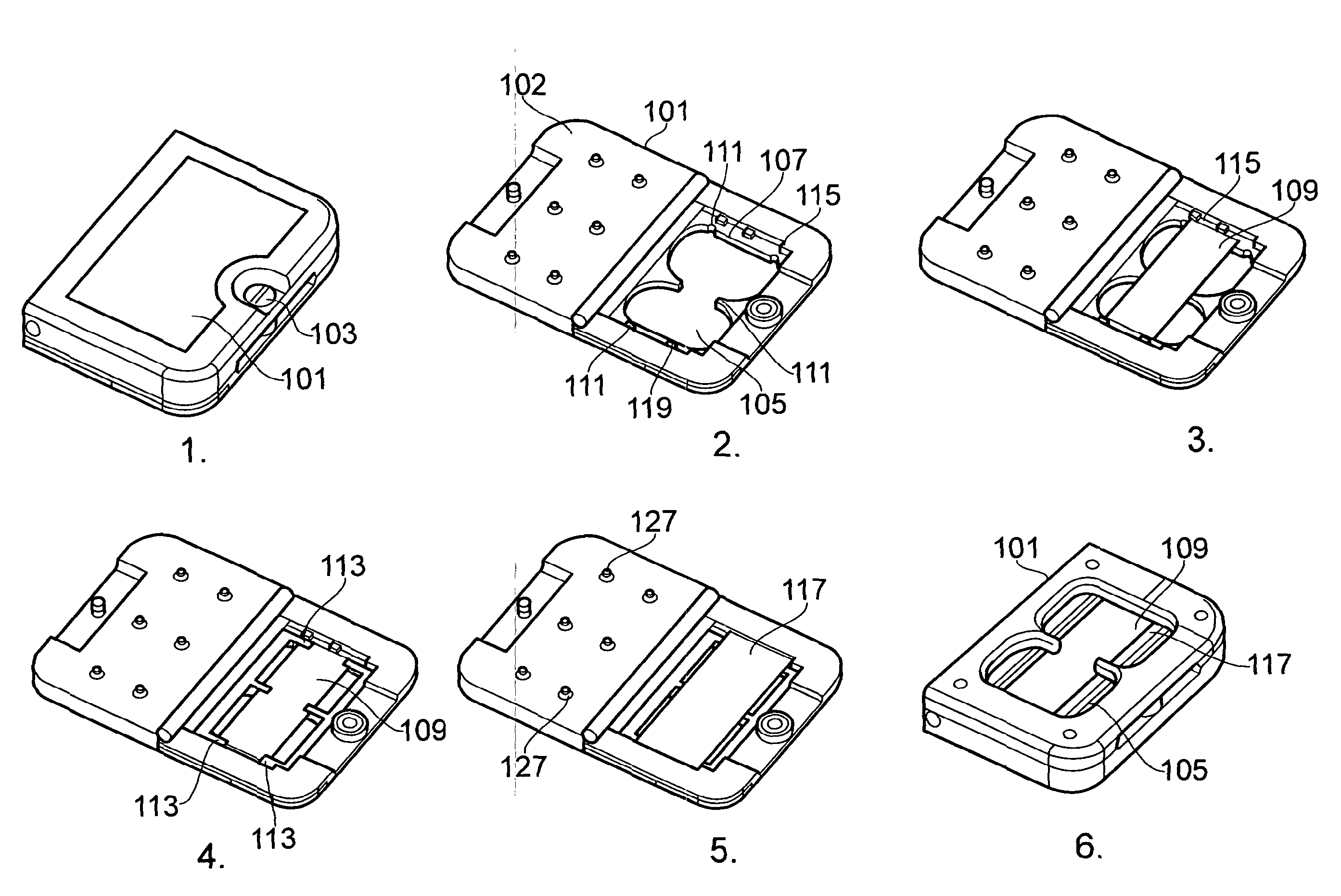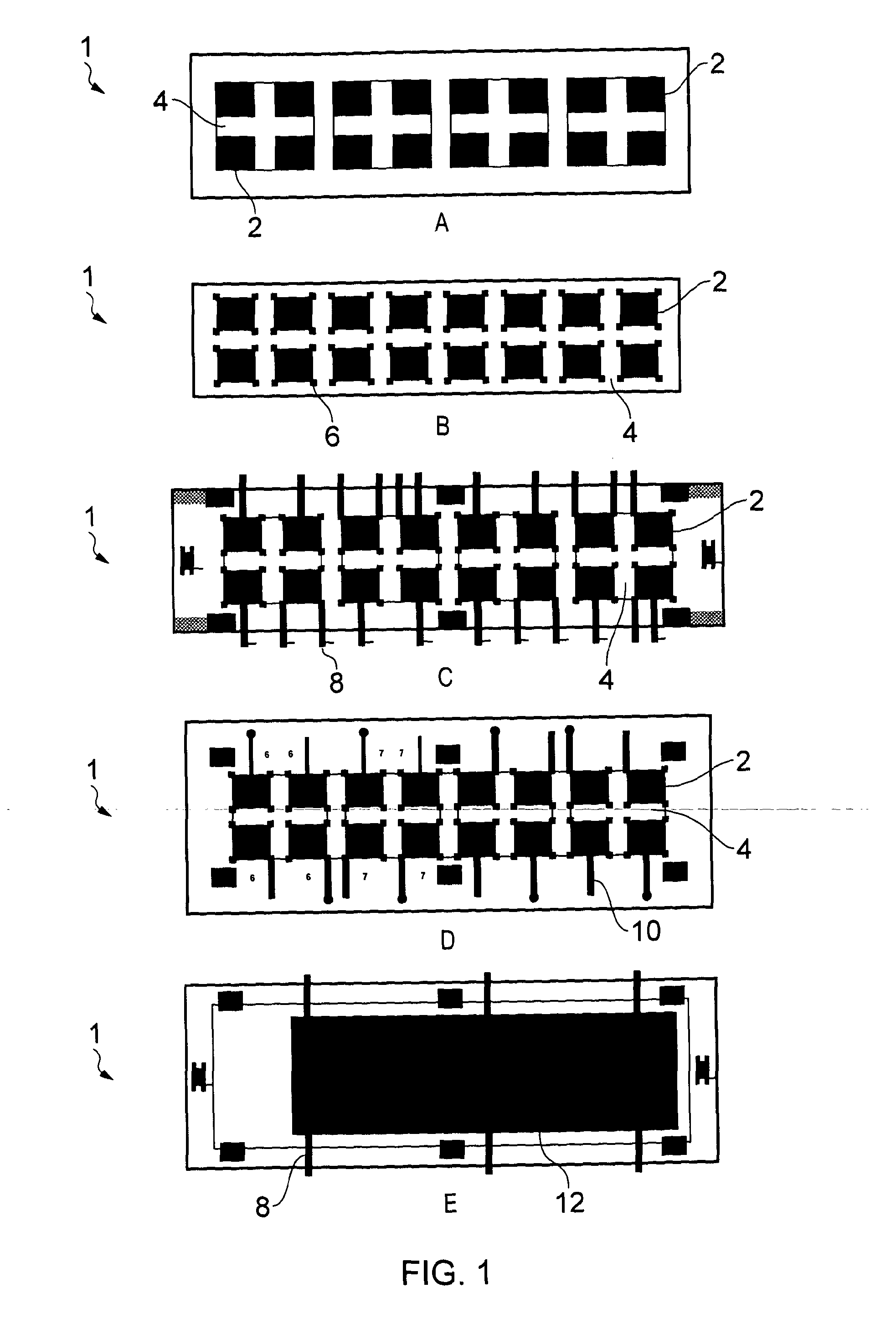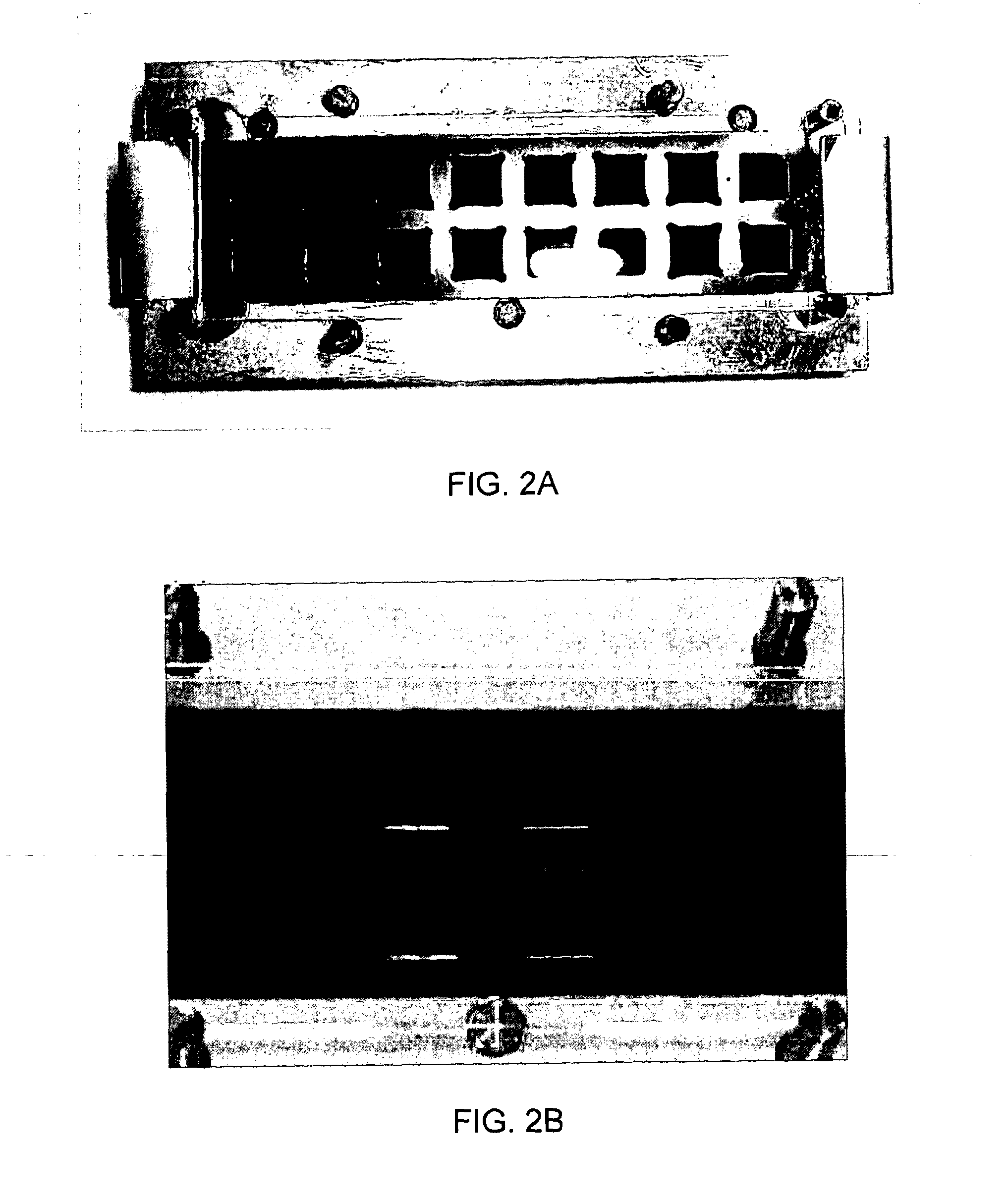Assay assembly and method
a technology of assembly and liquid sample, applied in the field of assay assembly, can solve the problems of affecting the integrity of the array surface, affecting the stability of the array, so as to reduce or avoid the formation of bubbles, improve the adaptability of the system, and improve the control of sample spread.
- Summary
- Abstract
- Description
- Claims
- Application Information
AI Technical Summary
Benefits of technology
Problems solved by technology
Method used
Image
Examples
example 1
ading
[0135]As many array sample liquids, include surfactant, providing a sample solution containing surfactant was investigated. Satisfactory sample spreading was observed for 8 μl of dye solution in PBS with 0.05% Tween, with side loading from a pipette into a hydrophilic channel, as shown in FIG. 6A. The second surface was a Menzel-Glaser slide (no array), with a 200 μm gap between the first and second surfaces. The hydrophobic boundaries were formed from CYTOP. FIG. 6B illustrates sample loading where a groove is provided. Satisfactory sample spreading is shown in FIG. 6B. The liquid is water soluble dye in PBS buffer. The hydrophobic boundaries were formed from parylene.
[0136]FIG. 6C shows improved filling to the corners of the hydrophilic surface when an overflow region is provided.
example 2
ffusion
[0137]In order to assess the diffusion of analytes in a liquid sample held between the first and second surfaces, a sample solution comprising fluorescently labelled BSA-AlexaFluor647 (1:1000 solution in PBS of 2 mg / ml stock of labelled protein) was loaded onto an example assembly. The non-specifically protein adsorbant surface (second surface; no array) used in these tests was home-made nitrocellulose spincoated onto silanated glass.
[0138]The surface was allowed to bind the protein for 30 min at room temperature, after which the second surface was rinsed by dipping quickly in abundant amount of PBS for 5 minutes with gentle shaking, dried and imaged on a fluorescent microarray scanner.
[0139]The data demonstrate that not only physical filling of the virtual ‘wells’ of the desired shape is possible, but also that fluorescently labelled BSA diffuses towards the ‘array’ surface throughout our quasi-square shape hydrophilic region in a reasonably uniform fashion. This is shown in...
example 3
[0142]A reverse-phase microarray assay, where BSA as a binding agent interacts with the probe rabbit anti-BSA serum, was chosen as a model to demonstrate the efficacy of the invention, where a planar microarray is used. Two types of arrayed patterns of BSA were used: a 10×10 array created as 16 pads spaced at 9 mm and a pattern covering nearly the whole slide solidly, generated by 4 arrayer tips, both with spot-to-spot spacing of 500 μm. BSA was spotted in PBS at 1 nl volume on Perkin Elmer Piezorray™. The blocker was β-lactoglobulin (BLG). The arrays were probed in the first reaction with rabbit anti-BSA serum followed by a wash. In the second reaction, binding was detected with anti-rabbit AlexaFluor647.
[0143]The reactions were then incubated for the desired length of time, which was one hour for the anti-BSA in the first reaction and 45 minutes for fluorescently labelled antibodies in the second reaction. Each of the 2 steps of binding reactions were done inside a humidity c...
PUM
| Property | Measurement | Unit |
|---|---|---|
| volume | aaaaa | aaaaa |
| volume | aaaaa | aaaaa |
| volume | aaaaa | aaaaa |
Abstract
Description
Claims
Application Information
 Login to View More
Login to View More - R&D
- Intellectual Property
- Life Sciences
- Materials
- Tech Scout
- Unparalleled Data Quality
- Higher Quality Content
- 60% Fewer Hallucinations
Browse by: Latest US Patents, China's latest patents, Technical Efficacy Thesaurus, Application Domain, Technology Topic, Popular Technical Reports.
© 2025 PatSnap. All rights reserved.Legal|Privacy policy|Modern Slavery Act Transparency Statement|Sitemap|About US| Contact US: help@patsnap.com



